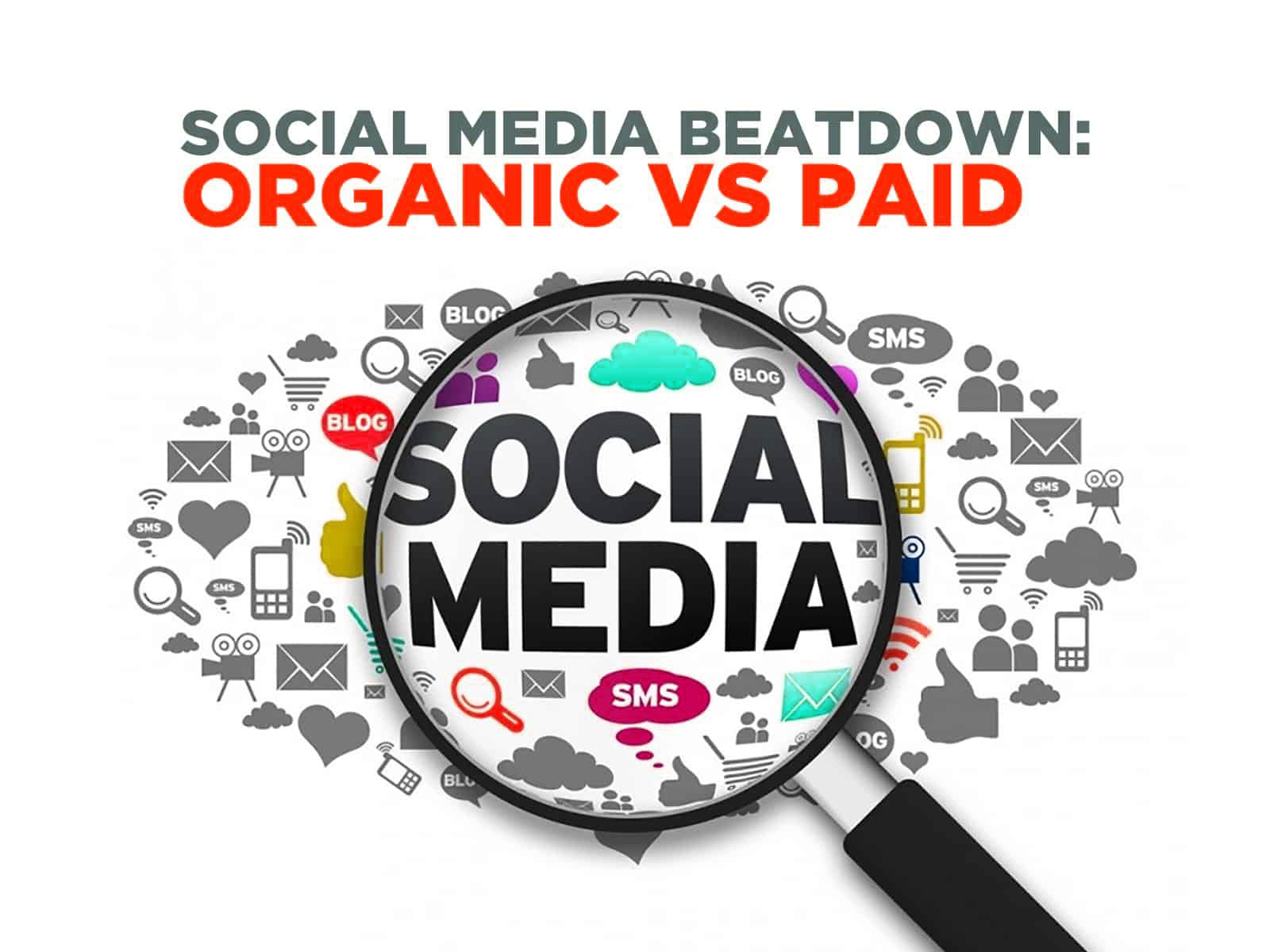What’s the Difference between Paid & Organic Social Media?

Social media is fun. You can post a picture of your super cute Labradoodle or your son graduating high school, and you can watch the likes and comments flood in without any effort. But when it comes to social media marketing, it’s not quite as simple. How do you know what type of content will resonate with an audience of potential customers? When should you turn a post into an ad to reach more people? What type of content is best for each strategy?
There are a lot of opportunities with both organic and paid social media you can take advantage of in your strategy, but before anything else, you have to know the differences between the two and the benefits they each provide. Let’s dive in.
What is Organic Social?
Organic social media refers to content posted for free and shows up in the news feeds of people that already follow your business page. The more certain people share or engage with your content, the more frequently your content will appear in their feeds thanks to Facebook’s algorithm which prioritizes content users care about.
The Benefits:
It’s more cost-effective (obv).
It’s free, so you can post as often as you’d like without worrying about costs. It’s a great way to build your online presence and stay connected with potential customers without breaking the budget.
It can help you create a brand identity.
Organic posts give the ability to add another layer to your marketing that shows off your personality more than a promotional ad would.
It allows you to directly engage with customers.
It’s called “social” media for a reason. Platforms like Facebook, Instagram, LinkedIn and more give your customers a more accessible outlet to post concerns, ask questions, and share their experiences. A well-maintained page encourages conversations which can lead to both new customers and great testimonials.
What is Paid Social Media?
Paid social posts involve putting some money behind a post in order to have it show up in the news feeds of people that you specifically target. These can be people that do or do not follow you based on the parameters you choose. This includes location, demographics, interests, groups, and more.
The Benefits:
You can target specific people.
Paid advertising allows you to really narrow in on people with higher potential to become new customers. By filtering between location, age, gender, and other unique criteria, you have much more control over the people receiving your message to increase its effectiveness.
It really works for any budget.
Social media offers a payment structure that works with virtually any budget. They typically charge on a Pay-Per-Click (PPC) basis, meaning you only pay if a user directly interacts with your ad. You can spend as much as you want and even create spending caps to prevent your costs from ever going over your budget.
You get more immediate results.
An organic strategy takes patience — you won’t see success overnight. But with paid, you basically do. Essentially, you’re paying to break through the algorithm to be seen immediately and more prominently by people to grow your following as soon as you hit publish.
So Which Strategy is Better?
That’s a trick question since a successful strategy will blend the two cohesively in order to reap all the benefits. If your business doesn’t have a massive social budget to launch significant campaigns, organic social is a great way to keep your audience engaged and informed. Paid social alone doesn’t build strong, long-lasting relationships. Regular organic posts allow you to establish trust and recognizability not only with existing followers but also people who may visit your page for the first time from a search engine or advertisement. (It’s hard to feel confident about a company who hasn’t posted since 2016.)
Videos, photos, stories, memes — find a balance of media and frequency that works for you and resonates with your audience. You’ll want to write thoughtful and relevant content that shows your brand personality. Your audience wants transparency and organic social media is the perfect way to start conversations and offer a preview of what working with you would be like.
According to Animoto, 58% of people say they visit a brand’s social pages before visiting their website in 2020, which is an 81% increase from the previous year.
With whatever budget you do have, incorporate paid social media to help you grow your audience more immediately. It’s a great way to leverage what you’ve learned from your organic posts in terms of performance to reach a larger audience and encourage them to follow you.
24% more consumers made a purchase after seeing a paid social ad in 2019 than in 2018 (Animoto), and that number continues to grow year after year.
Every social platform has different formats of paid advertising, so you can use each in different ways, but it will definitely require more attention and analysis. Monitor these ads closely to make sure you’re continually learning from your audience behaviors to maximize your investment.
To learn more about launching a successful social media strategy with both organic and paid advertising, we’re here to help. Contact shyft today.
Recent Posts:

